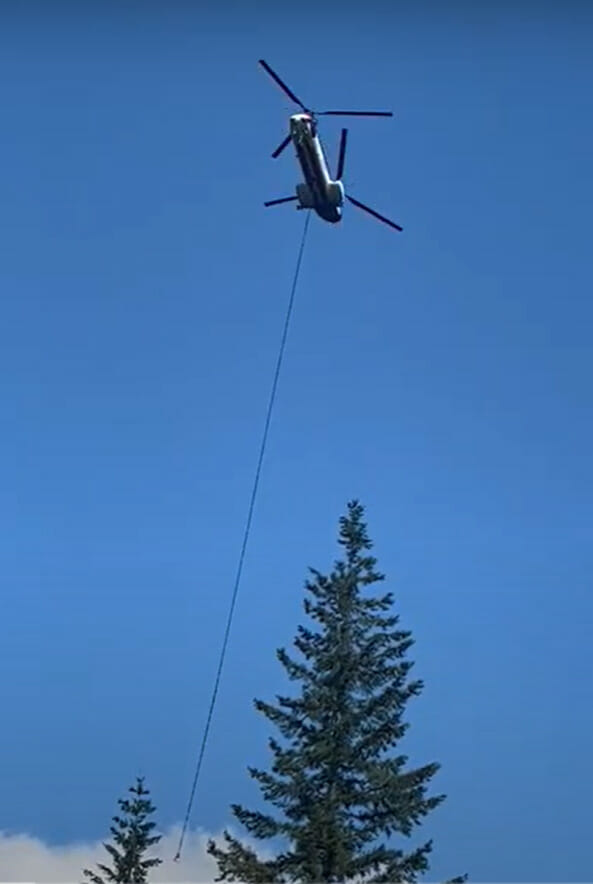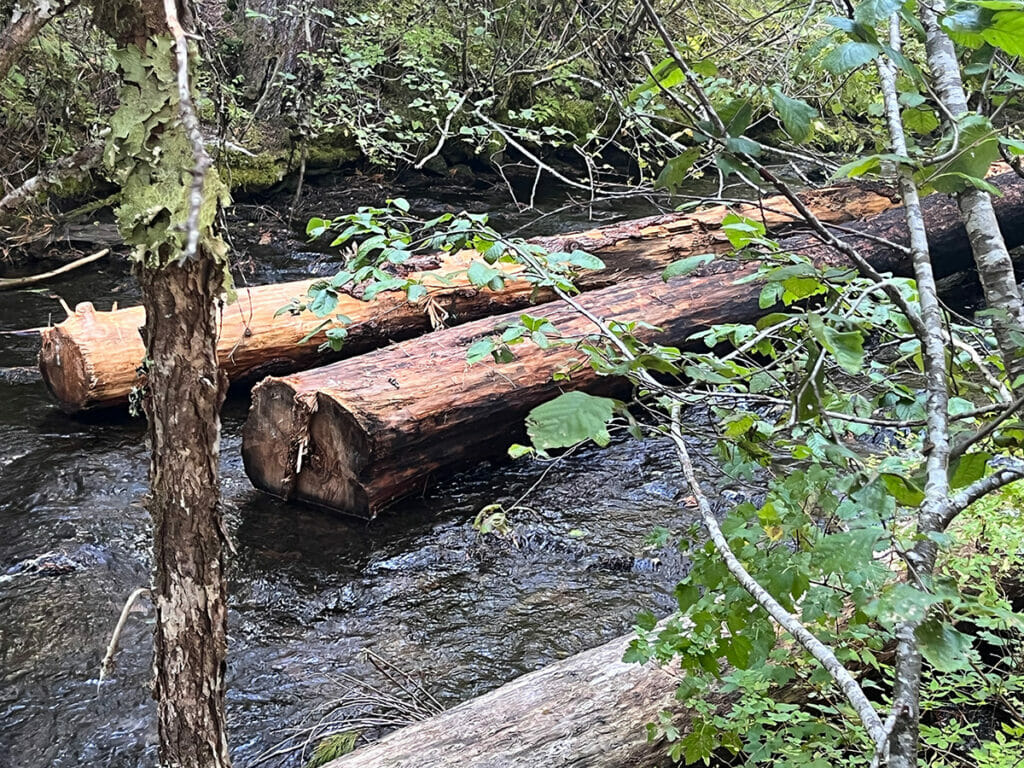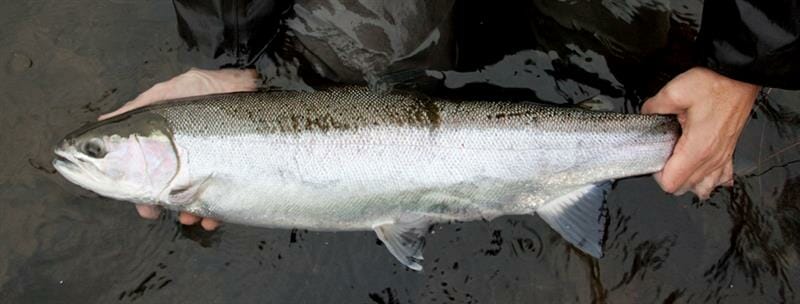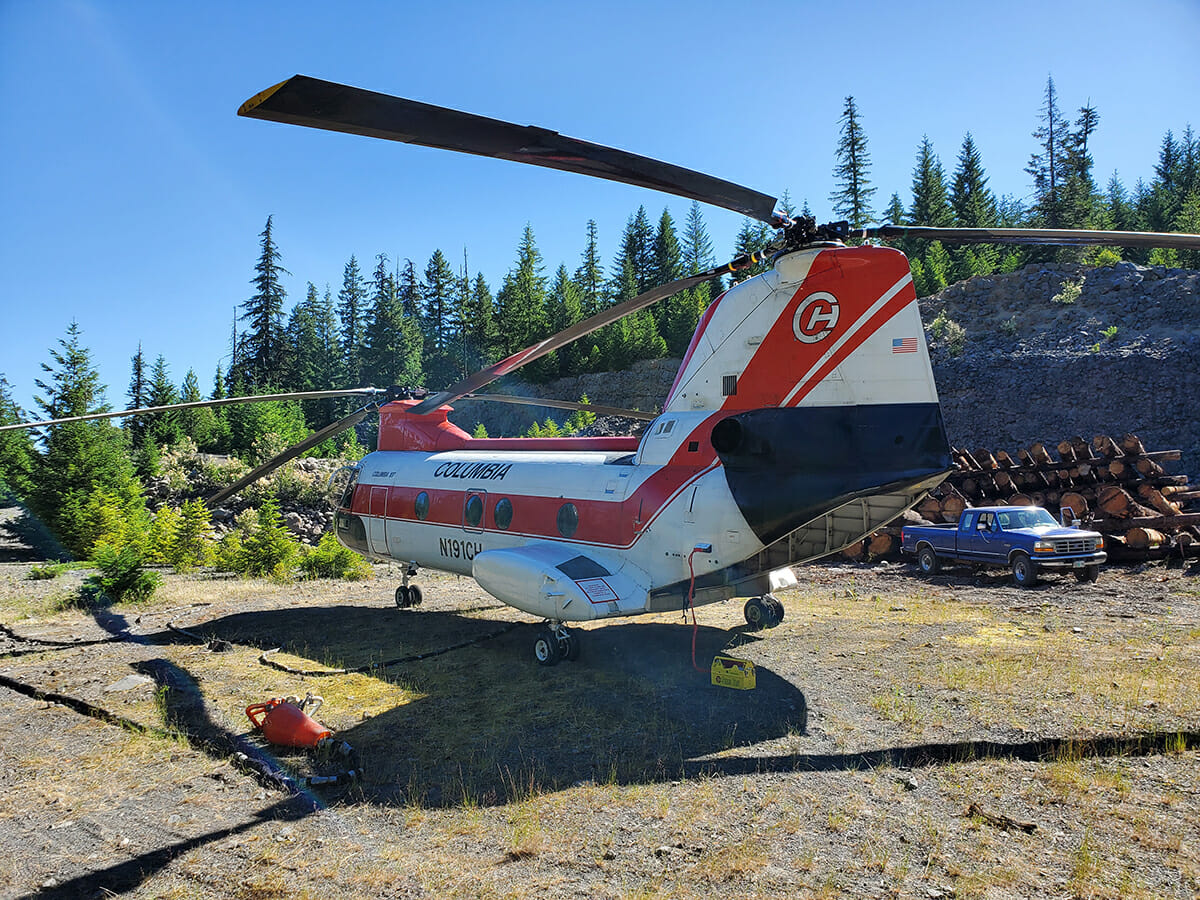In Oregon, anglers call in a helicopter to upgrade fish habitat on the Clackamas
Over the course of two days in late July, a powerful twin-engine helicopter flew multiple trips into the headwaters of Oregon’s Clackamas River to carefully place nearly 400 large logs along three miles of Berry and Cub Creeks. The two tributaries are important spawning and rearing habitat for native winter steelhead, coho and chinook salmon, bull trout, pacific lamprey, and cutthroat trout and the log jams will help restore ecological function and improve habitat degraded by wildfire and historic logging.
To move the huge pieces of Douglas fir, ground crews used choker chains to connect the logs to a 150-foot cable dangling below the helicopter. The logs averaged forty feet in length and a couple feet in diameter at their base, allowing the helicopter to haul one to three per trip. On the ground along the tributaries, agency staff guided the pilots to the drop zone.

This was the first project from a recently expanded collaboration between the Clackamas River Chapter of Trout Unlimited, the Oregon Department of Fish and Wildlife (ODFW) and the U.S. Forest Service (USFS). Next summer, the partners plan to build on this work with two more substantial habitat restoration and fish passage projects in the upper and lower Clackamas watershed, including another on Cub Creek.
Headwaters restoration in the Mount Hood National Forest
Berry Creek and Cub Creek flow through Mount Hood National Forest in rugged terrain south of the dormant volcano towering over its namesake public lands. The Clackamas flows northwest from there, eventually joining the Willamette River, which in turn runs north until it enters the lower Columbia, pouring through two channels on either side of Sauvie Island near Portland. The “Clack,” as it is affectionately known locally, is a large river, especially during the high flows of western Oregon’s rainy winter. Its proximity to the Portland metro area and accessibility means it is popular with regional anglers and boaters throughout the year.

The Clackamas headwaters were badly burned by the Lionshead Fire in September 2022, and the logs used in the restoration project on Berry and Cub Creeks were sourced from trees killed in the fire zone. Helicopters were required because the streams receiving the large pieces of timber are inaccessible to ground-based equipment of the size required.
The chapter’s partnership with ODFW and USFS regional staff has been led by Terry Turner, a volunteer project manager who spent his career managing complex logistics around manufacturing, engineering, and product launches worldwide. A dedicated TU member for over thirty years, Turner has held leadership roles with the Clackamas chapter, the Oregon State Council, and the TU National Board of Trustees, and serves on the Salmon SuperHwy executive team and as a volunteer on ODFW’s Fish Passage Task Force.
“Adding these pieces of large wood is going to increase pool depth and frequency, help recruit and retain spawning gravel, and restore in-channel habitat complexity for the benefit of juvenile fish rearing in Berry and Cub Creeks,” Turner explained. “Before the project, these stream segments only had between two and twenty large wood pieces per mile. They now have 150 pieces per mile, well within the range of similar sized creeks in the Forest we used as reference.”
“In fact,” he added, “our original commitment was to place a total of 326 pieces of large wood in the two tributaries. Thanks to the efficiency and dedication of Columbia Helicopters and our agency partners, we were able to exceed that goal by an additional 61 logs.”
A Successful Restoration Partnership
This summer’s work was funded through a $228,000 grant Clackamas River TU secured from the Oregon Watershed Enhancement Board and a $42,000 grant from the Forest Service’s Drinking Water Providers Fund. The Forest Service tapped Fire Recovery funds to move the salvaged logs to staging areas where they could be airlifted into the basin’s headwaters
“Terry and Trout Unlimited have been fantastic to work with on the Cub Creek project,” said Bruce Zoellick, fisheries program manager with Mount Hood National Forest. “Their development and execution of the helicopter contract was crucial to the project’s success. The scope and scale of the project was only possible with the restoration funding Trout Unlimited received to fund the work. The Mt. Hood Forest is excited to continue partnering with Clackamas River TU to restore salmon and steelhead habitat and address wildfire impacts in the upper Clackamas River basin.”
Summer 2023: Restoration Work Continues on Clackamas Tributaries
Next summer crews expect to be working in a one-mile stretch of lower Cub Creek near the creek’s confluence with the Clackamas mainstem. In this section of the watershed, historic logging practices degraded the available habitat and resulted in a deeply incised creek channel. Crews will add 150 to 200 pieces of large wood, work to reconnect an important side channel and use earth-moving equipment to restore flows to approximately 15 acres of floodplain habitat, all of which will support improved fish spawning and rearing.

In addition to the second phase of work on Cub Creek, the partners are also moving ahead with a dam removal project on the North Fork of Eagle Creek, an important tributary to the lower Clackamas.
The North Fork of Eagle Creek is designated as critical habitat for steelhead, coho, and chinook. The dam was built in the 1950s on private land and currently impedes access to eight miles of spawning and rearing habitat. After the dam is removed, crews will add large wood and stabilize banks upstream to help restore habitat complexity.
The summer of 2023 promises to be a busy one for Clackamas River TU and its agency partners. Thanks to their ongoing work and investment, the watershed’s native anadromous and resident fish will have more access to high-quality spawning gravel and generations of their offspring will have better opportunities to thrive.



